You're using an outdated browser. Please upgrade to a modern browser for the best experience.
Please note this is a comparison between Version 2 by Lindsay Dong and Version 3 by Lindsay Dong.
In modern eye care, the adoption of ophthalmology chatbots stands out as a pivotal technological progression. These digital assistants present numerous benefits, such as better access to vital information, heightened patient interaction, and streamlined triaging.
- ophthalmology
- artificial intelligence
- machine learning
- language processing
- large language models
- chatbot
1. The Utilization of Chatbots for Ophthalmology
The rise of chatbot technology, as showcased by industry leaders like ChatGPT by OpenAI, Google’s Bard AI, Microsoft’s BingChat, and Anthropic’s Claude AI, has been a focal point of interest across myriad sectors, notably within the healthcare domain [1][2][3][4][5][6]. These chatbots are applications powered by artificial intelligence, meticulously designed to simulate human conversation through either text or voice interactions [4][7][8][9][10]. Utilizing cutting-edge natural language processing algorithms, these advanced systems can discern and address user inquiries with precision, delivering bespoke and pertinent information [1][2][11].
In the context of ophthalmology, chatbots introduce a fresh and innovative approach to delivering healthcare services, engaging with patients, and providing support to healthcare professionals [12][13][14]. Through harnessing the potential of chatbot technology, ophthalmology practices have the opportunity to augment accessibility, operational efficiency, and overall patient experience. For instance, integrating chatbots into their systems enables ophthalmology practices to deliver round-the-clock support, address common inquiries regarding eye health, facilitate appointment scheduling, and even offer preliminary guidance concerning eye conditions.
In the expansive landscape of ophthalmology, ChatGPT and chatbots of its ilk have heralded an era of uninterrupted communication, instantaneous information retrieval, and tailor-made interactions. These tools equip patients with the means to secure immediate help, while empowering healthcare practitioners to dispense proficient support. In streamlining the triage of patient queries, providing educational materials, and shepherding patients through both pre- and post-operative care directions, these chatbots have carved an indispensable niche for themselves. A clear demonstration of the influence of ChatGPT, which was developed by OpenAI, is found in the domain of medical pedagogy. Within this scope, it functions as an enhancer of search efficiency and a rectifier of manuscript inconsistencies. ChatGPT has emerged as an invaluable asset, especially in accessing specialized literature germane to renal transplant care. Equally impactful are other AI-driven conversational platforms, such as Microsoft’s BingChat and Google’s Bard AI. These technologically adept interfaces excel in enhancing search capabilities, remedying typographical and grammatical oversights, and enhancing the scrutiny of academic content [15]. Bard AI, with its rich foundational training in a myriad of texts and coding paradigms, is poised to craft context-sensitive textual interpretations [16]. This prowess positions it as an invaluable asset in healthcare, ranging from buttressing decisions anchored in evidence to honing the quality of communication (Figure 1).
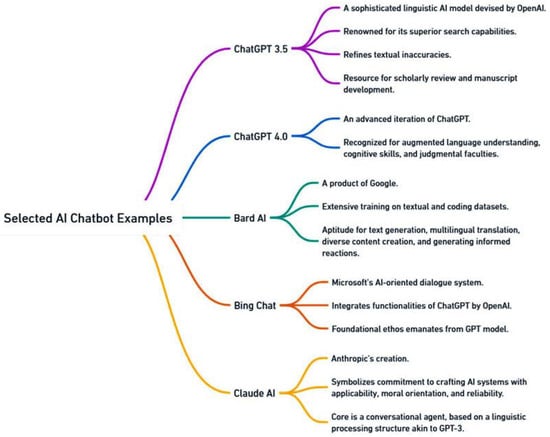
Figure 1. Examples of notable AI chatbots.
The incorporation of chatbot technology in ophthalmology represents a promising advancement, capable of reshaping the provision of eye care by improving accessibility, operational efficiency, and patient satisfaction. Utilizing the capabilities of chatbots enables ophthalmology practices to provide a higher standard of care, improve patient outcomes, and furnish individuals with essential information and support.
2. Design and Development of Ophthalmology Chatbots
2.1. Understanding User Needs and Requirements
When designing and developing chatbots for ophthalmology, it is critical to have an extensive understanding of the unique needs and requirements of users specific to the ophthalmology practice [17]. This includes considering the particular challenges faced in ophthalmology and adhering to user-centered design principles to ensure the creation of effective chatbots. The development process should also incorporate the collection and analysis of user feedback, to confirm that the chatbot meets the expectations and requirements of both patients and professionals in the discipline. Importantly, this entails creating two distinct paths in chatbot development: one tailored for doctors, using scientific and medical terminologies, and another for patients, employing non-medical, layperson-friendly language. This bifurcation ensures that the chatbot effectively communicates and engages with each group according to their specific knowledge levels and communication preferences (Figure 2).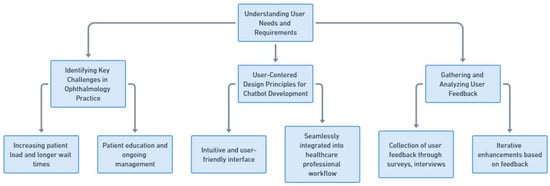
Figure 2. Understanding user needs and requirements.
2.1.1. Identifying Key Challenges in Ophthalmology Practice
The practice of ophthalmology is confronted with a variety of unique challenges that can be effectively addressed through the integration of chatbot technology. One notable challenge lies in the increasing patient load stemming from the escalating prevalence of eye conditions, [18] resulting in longer wait times and limited availability of consultations [19][20][21]. Chatbots offer a potential solution to this challenge by providing automated symptom assessment and triage capabilities, enabling patients to promptly receive initial guidance concerning their conditions. However, it is crucial to underline that automatic triage systems have limitations and should not replace professional medical evaluation, especially in complex cases.
Another significant challenge pertains to patient education. Many eye conditions necessitate ongoing management and patient compliance, which can be improved through the provision of effective education and information [22][23][24][25]. Ophthalmology chatbots have the ability to dispense general eye health information, elucidate common ophthalmic procedures and treatments, and offer guidance regarding pre- and post-operative care. This empowers patients to take an active role in their eye health, leading to improved adherence and better treatment outcomes.
2.1.2. User-Centered Design Principles for Chatbot Development
The development of chatbots for ophthalmology necessitates adherence to user-centered design principles. This approach entails gaining a deep understanding of the specific needs, preferences, and behaviors of both patients and healthcare professionals operating within the field of ophthalmology.
Regarding patients, it is essential for the chatbot interface to be intuitive and user-friendly, featuring clear instructions and prompts, and avoiding complex medical terminology. Moreover, visual design elements should be optimized with ophthalmology in mind, taking into consideration factors such as color contrast, font size, and readability, to ensure inclusivity and accessibility for users with visual impairments [26].

2.1.3. Gathering and Analyzing User Feedback
The collection of user feedback plays a critical role in refining and enhancing the design and functionality of ophthalmology chatbots. User feedback can be obtained through various channels, such as surveys, interviews, and user testing sessions. This valuable input provides insights into UX, challenges encountered, and areas in need of improvement. The analysis of user feedback enables iterative enhancements of the chatbot’s performance. It aids in the identification of common issues, understanding user preferences, and more importantly, uncovering any gaps in the chatbot’s capabilities. This is achieved by systematically analyzing feedback for patterns of misunderstandings, incorrect responses, or inadequate information provided by the chatbot.2.2. Chatbot Architecture and Functionality
In the context of ophthalmology chatbots, it is of importance to have a well-designed and functional architecture that specifically caters to the unique requirements of the field. This section thoroughly examines three pivotal aspects: natural language processing (NLP) tailored for ophthalmology, the integration of the knowledge base and medical databases, and conversational flow and dialogue management (Figure 3).
Figure 3. Chatbot architecture and functionality.
2.2.1. Natural Language Processing for Ophthalmology
Within the ophthalmology domain, NLP technology must be tailored to the specific language and terminology used. Accurate recognition and comprehension of ophthalmic terms, medical abbreviations, and anatomical references by the chatbot are essential.
To attain these capabilities, the development of ophthalmology chatbots necessitates an in-depth understanding of domain-specific knowledge and language. Incorporating domain-specific ontologies, medical literature, and expert knowledge can significantly enhance the accuracy and effectiveness of the employed NLP algorithms. With the development of AI and ML, NLP in ophthalmology has evolved significantly in recent years, encompassing text data extraction, part-of-speech tagging, indexing, tokenization, classification, entity recognition, and word embeddings [27]. This has enabled Chatbot development to achieve desirable features.
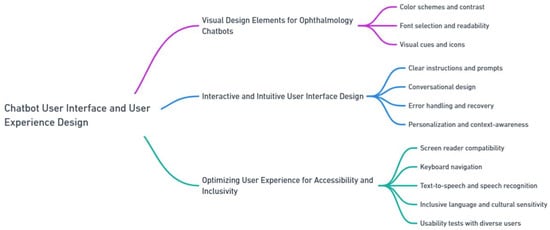
2.2.2. Integration of Knowledge Base and Ophthalmology Databases
The integration of the knowledge base and ophthalmology databases is pivotal for ophthalmology chatbots to provide accurate and up-to-date information. It is imperative that this information be readily accessible to the chatbot, facilitating the delivery of reliable responses and recommendations. The knowledge base can encompass structured information such as clinical guidelines, best practices, and standardized treatment protocols. These protocols are typically derived from clinical trials and the consensus among medical experts. However, it is important to acknowledge that clinical trials can sometimes yield conflicting results.2.2.3. Conversational Flow and Dialogue Management
An effective ophthalmology chatbot should possess the ability to manage conversational flow and dialogue in a seamless and natural manner. The dialogue management system orchestrates the interaction between the chatbot and the user, ensuring smooth transitions and relevant responses. A chatbot is designed to engage in comprehensive conversations with patients, effectively addressing a wide range of concerns and queries. This includes guiding users through structured dialogues to gather necessary medical information; handling various dialogue scenarios, such as clarifying ambiguous queries; asking pertinent follow-up questions; and providing clear, detailed explanations.2.3. Chatbot User Interface and User Experience Design
The creation of an effective user interface (UI) and the provision of a positive user experience (UX) are imperative for achieving optimal engagement and usability. This section emphasizes three fundamental aspects: visual design elements tailored specifically for ophthalmology chatbots, interactive and intuitive UI design, and the optimization of UX with regard to accessibility and inclusivity (Figure 4).
Figure 4. Chatbot user interface.
2.3.1. Visual Design Elements for Ophthalmology Chatbots
Visual design elements play a pivotal role in the development of an engaging and user-friendly UI for ophthalmology chatbots. To ensure these elements are effectively customized, it is imperative that the chatbot first gathers and understands the distinctive characteristics and requirements of each patient in the ophthalmology practice.
Color schemes and contrast are key aspects of this customization. Selecting appropriate color schemes and ensuring suitable contrast levels are vital for enhancing readability and visual comfort, especially for users with visual impairments. The chatbot must be capable of adapting its interface based on the specific visual needs of the patient.
Font selection and readability: Employing clear and easily readable fonts facilitates effortless navigation for users of the chatbot interface. Additionally, incorporating font sizes that can be easily adjusted enables users to customize the display according to their specific needs.
Visual cues and icons: The integration of visual cues and icons contributes to an enhanced UX overall. Utilizing intuitive icons and symbols that are specific to ophthalmology, such as eye-related illustrations or medical symbols, assists in quickly conveying information and guiding users through the chatbot interface.
2.3.2. Interactive and Intuitive User Interface Design
Creating an interactive and intuitive UI is pivotal for ophthalmology chatbots to effectively engage and assist users. The UI design should enable seamless navigation and provide a user-friendly experience [28].
Clear instructions and prompts: Chatbots should employ explicit instructions and prompts to guide users throughout their interactions. Offering step-by-step guidance and clear instructions on how to interact with the chatbot facilitates a smooth flow of conversation.
Conversational design: Emulating natural conversation in a chatbot interface is crucial for enhancing user engagement. The chatbot should provide a conversational tone, mimicking human-like interactions, and appropriate responses to user inputs, including variations in language, phrasing, and sentence structure.
Error handling and recovery: To maintain a positive user UX, the chatbot should adeptly handle user errors or misunderstandings, provide suggestions for correcting or rephrasing queries, and offer help options for users to recover from errors or confusion.
Personalization and context-awareness: Personalization and context-awareness in UI design can enhance the UX by allowing chatbot to remember user preferences, past interactions, and relevant information. This facilitates a more personalized and tailored conversation, providing users with a sense of continuity and familiarity.
2.3.3. Optimizing User Experience for Accessibility and Inclusivity
Ensuring accessibility and inclusivity in the design of ophthalmology chatbots is of importance. The UI must be designed to accommodate the diverse needs of users, including those with visual impairments or disabilities.
Ensuring the compatibility of the chatbot interface with screen readers and other assistive technologies is a critical aspect of our design, particularly for users with visual impairments. To achieve this, a chatbot should be regularly evaluated and updated by a dedicated accessibility team, which includes experts in assistive technology, user experience designers, and representatives from the visually impaired community.
Another key feature of chatbot accessibility is enabling keyboard navigation, which is essential for users who rely solely on keyboard interactions. The chatbot interface should be designed to allow users to navigate through the conversation and access all functionalities using keyboard commands. Modifications to keyboard navigation are also overseen by an accessibility team, which bases changes on user feedback, technological advancements, and best practices in digital accessibility.
3. Applications and Benefits of Chatbots in Ophthalmology
3.1. Remote Patient Monitoring and Triage
In the field of ophthalmology, chatbots have emerged as valuable tools for remote patient monitoring and triage, providing numerous advantages for both patients and healthcare providers. This section explores three primary applications of chatbots in ophthalmology, namely automated symptom assessment and triage, remote monitoring of eye conditions and treatment adherence, and facilitating telemedicine consultations (Figure 5).


Figure 5. Remote patient monitoring and triage in ophthalmology.
3.1.1. Automated Symptom Assessment and Triage
Chatbots equipped with advanced NLP capabilities can assess and triage ophthalmic symptoms. Patients can interact with the chatbot, describing their symptoms and providing relevant information. The chatbot then analyzes this input and generates preliminary assessments based on established medical guidelines and protocols.
An ophthalmology chatbot is designed to perform automated symptom assessment and triage, enabling the timely identification of urgent cases, such as acute vision loss or severe eye pain. This system utilizes a sophisticated algorithm, developed in collaboration with ophthalmology experts, which assesses the severity and nature of symptoms reported by the patient. Urgent cases are identified based on predefined criteria, such as the sudden onset of symptoms, intensity of pain, or risk factors for serious eye conditions.
3.1.2. Remote Monitoring of Eye Conditions and Treatment Adherence
Ophthalmology chatbots can assist in the remote monitoring of eye conditions and ensuring treatment adherence in patients with chronic eye conditions. Through regular interactions with patients, chatbots can gather information about visual symptoms, medication usage, and lifestyle factors that may impact eye health. Chatbots can improve medication adherence for patients with complex eye medication regimens. By sending reminders, educational messages, and addressing common concerns, chatbots can improve understanding and compliance, ensuring better treatment outcomes.
The remote monitoring capabilities of ophthalmology chatbots are crucial for timely intervention in cases of disease progression or non-adherence to treatment. In this context, “high-risk situations” refer to scenarios where there is a significant risk of rapid disease progression, potential vision loss, or other serious complications. These situations may include, but are not limited to, sudden changes in vision, symptoms indicating potential retinal detachment, or signs of acute glaucoma.
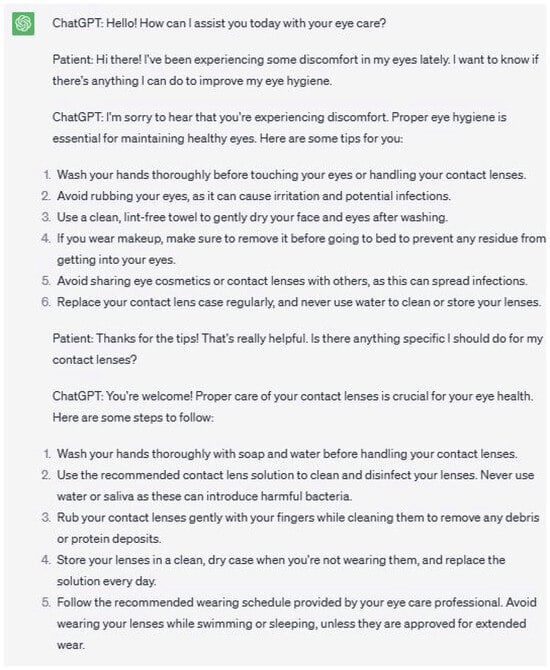
3.1.3. Facilitating Telemedicine Consultations
The integration of chatbots in ophthalmology facilitates telemedicine consultations, enabling remote access to specialized eye care. While telemedicine has gained prominence, especially in situations where physical visits are challenging, it is important to recognize the current limitations of chatbots in this context. Chatbots may serve as virtual assistants during telemedicine consultations, providing support to ophthalmologists and enhancing the patient experience. Patients can engage with the chatbot for tasks like providing medical history and addressing preliminary concerns.3.2. Patient Education and Information Provision
3.2.1. Dispensing General Eye Health Information
Ophthalmology chatbots can serve as interactive platforms that grant patients access to accurate and up-to-date information [29]. Through engagement with the chatbot, patients can obtain tailored information based on their individual needs and concerns. Moreover, it can educate patients on the significance of regular eye examinations and lifestyle factors such as protection from ultraviolet (UV) radiation. Chatbots can address frequently asked questions, debunk myths and misconceptions, and clarify doubts related to eye health. They can offer guidance on topics such as proper eye hygiene, contact lens care, and vision correction options (Figure 6). The chatbot is capable of adapting its responses to accommodate the patient’s level of understanding and of delivering information in a concise and comprehensible manner.
Figure 6. This figure illustrates a two-way conversation between a patient and ChatGPT, a language model designed to offer guidance on eye care topics. The patient seeks advice regarding discomfort in their eyes and ways to improve eye hygiene. ChatGPT responds by providing concise and comprehensible information, including tips on proper eye hygiene and steps for the care of contact lenses. The chatbot adapts its responses to accommodate the patient’s level of understanding, making the conversation informative and helpful for the patient’s eye health.
3.2.2. Explanation of Common Ophthalmic Procedures and Treatments
Ophthalmology chatbots serve as valuable tools for elucidating common ophthalmic procedures and treatments to patients. They provide detailed information about diagnostic tests, surgical interventions, and medical treatments in a user-friendly and accessible manner.
Patients can interact with the chatbot to acquire knowledge about the purpose, process, and potential outcomes of various ophthalmic procedures. The chatbot can guide them through the steps involved in diagnostic tests such as visual acuity assessments, tonometry, and fundoscopy.
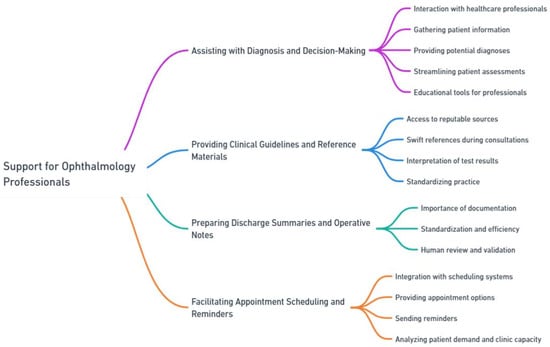
3.2.3. Guidance on Pre- and Post-Operative Care
Adequate preparation of patients for the surgical experience and the provision of appropriate post-operative care are essential for optimizing outcomes and minimizing complications. Prior to surgery, chatbots can recommend to patients the necessary preparations, which may include fasting requirements and medication adjustments. They can provide advice on what to expect during the procedure, address common concerns, and offer reassurance and support. It is important to note that while chatbots can provide these recommendations based on standard pre-surgical protocols, the final preparation plan may be modified by the surgeon as necessary, tailored to the individual patient’s condition.3.3. Support for Ophthalmology Professionals
Ophthalmology chatbots provide assistance in diagnosis and decision-making, delivery of clinical guidelines and reference materials, as well as in managing appointment scheduling and reminders. This section offers a detailed examination of these key areas, emphasizing the benefits and enhancements they bring to healthcare professionals in ophthalmology (Figure 7).
Figure 7. Support for ophthalmology professionals.
3.3.1. Assisting with Diagnosis and Decision-Making
Ophthalmology chatbots can assume a pivotal role in assisting healthcare professionals with diagnosis and decision-making processes. By utilizing their conversational and data processing capabilities, these chatbots interact with healthcare professionals, assisting in the collection of pertinent information related to patients’ ocular conditions.
Chatbots can be programmed to pose targeted questions regarding patients’ symptoms, medical history, ocular examinations, and other factors that may relate to certain diseases. By assimilating this information, chatbots assist healthcare professionals in developing a comprehensive understanding of the patient’s condition, which can facilitate accurate diagnoses and informed treatment decisions.

3.3.2. Providing Clinical Guidelines and Reference Materials
Ophthalmology chatbots possess the capability to furnish healthcare professionals with clinical guidelines and reference materials. These chatbots can be programmed to access and retrieve information from reputable sources, such as medical databases, clinical practice guidelines, and research articles. By having access to an extensive array of information, healthcare professionals can employ chatbots as swift references during patient consultations. Chatbots provide evidence-based recommendations for the diagnosis, treatment, and management of various ocular conditions. They also offer guidelines for monitoring and follow-up care, ensuring that healthcare professionals remain abreast of best practices in ophthalmology. Moreover, chatbots assist healthcare professionals in interpreting test results and imaging studies. They provide explanations for various ophthalmic tests, such as visual field testing, optical coherence tomography (OCT), or fundus photography. Second, chatbots aid in standardizing practice and fostering consistency in care delivery. By providing guidelines and recommendations, chatbots assist healthcare professionals in adhering to established protocols and best practices. This fosters improved patient outcomes and enhances the quality of care across various healthcare settings.3.3.3. Preparing Discharge Summaries and Operative Notes
Discharge summaries and operative notes are of importance in ophthalmology for maintaining continuity of care, facilitating effective communication among healthcare providers, serving as legal documentation, supporting research and education, and promoting patient safety and quality improvement. While the significance of these factors is recognized, variations in content and the time-consuming process pose the greatest challenges in achieving excellence [30][31][32]. Using a chatbot for writing discharge summaries and operative notes can offer several advantages in terms of standardization, efficiency, accuracy, and convenience [33]. With proper training and the improvement of AI libraries, chatbots can be seen as tools to assist ophthalmology healthcare in generating comprehensive and efficient discharge summary and operative notes. It is important to note that human review and validation are crucial to ensure accuracy, especially in complex cases and for handling situations that require clinical judgement and empathy.3.3.4. Facilitating Appointment Scheduling and Reminders
Ophthalmology chatbots possess the capability to facilitate appointment scheduling and reminders for healthcare professionals. They can seamlessly integrate with existing scheduling systems and electronic health records, enabling patients to conveniently book appointments and receive timely reminders about their upcoming visits. Chatbots provide patients with options for available appointment slots, assisting them in finding suitable times that align with their schedules. They also automatically send reminders to patients, reducing the likelihood of missed appointments and enhancing overall clinic efficiency. Patients can access the chatbot at their convenience, obviating the need for phone calls or waiting on hold to schedule appointments, thus enhancing patient satisfaction and engagement.3.4. Ophthalmology Training
Chatbots hold immense potential as valuable educational tools in medical training, offering accessible and interactive resources to learners [34]. In the context of ophthalmology training, chatbots can play a crucial role in various aspects, including providing the fundamentals of ophthalmology, facilitating case studies and diagnostic support, offering adaptive assessment, and even simulating surgical procedures. Furthermore, they can assist with administrative tasks and personalized course organization, tailoring the learning experience to individual needs. One of the most significant advantages of chatbots in this domain is their ability to provide comprehensive knowledge and reference materials essential for ophthalmology training. Through incorporating simulated patient interactions, chatbots enable learners to practice and refine their clinical skills effectively. By presenting realistic case scenarios, students can engage in diagnostic decision-making and treatment proposals. The chatbot can then offer valuable feedback on their decisions, guiding them throughout the process. This feedback mechanism not only helps learners identify areas for improvement but also provides specific recommendations for additional study or practice, which can be invaluable for their professional growth.4. Availability and Performance of Current Ophthalmology Chatbots
4.1. Chatbot Performance in Triage Ophthalmology Conditions
In a study performed by Tsui, J.C. et al., ten prompts reflecting common patient complaints related to common ophthalmology conditions were used to determine the suitability of ChatGPT 3.0 responses. The study also evaluated the precision of the responses by comparing the responses to the same questions from three individual chats. The study found a majority of responses were precise and suitable; however, 20% of responses were considered imprecise or unsuitable [35].4.2. ChatGPT Performance in Patient Education and Information Provision
A study from Potapenko et al. assessed the accuracy of patient information for five common retinal diseases (i.e., age-related macular degeneration, diabetic retinopathy, retinal vein occlusion, retinal artery occlusion, and central serous chorioretinopathy) using ChatGPT 3.0. They evaluated accuracies in disease summary, prevention, treatment options, and prognosis. Most responses showed high accuracy, with median ratings ranging from “good/only minor non-harmful inaccuracies” to “very good/no inaccuracies.” However, treatment options had “moderate/potentially misinterpretable inaccuracies”, with 12 of 100 treatment responses showing “potentially harmful inaccuracies” [7].4.3. Chatbots Examples in Supporting for Healthcare Professionals
A preliminary work utilizing ChatGPT 3.0 to generate discharge summaries across subspecialties found that the AI-constructed documents were able to shorten the processes; however, their quality was based on the completeness of the prompts given and required training and adjustment [33]. GlauCUTU is another example of a chatbot designed to aid with glaucoma diagnosis. This chatbot utilizes a deep learning algorithm to provides real-time response to help in screening glaucoma based on optic disc photo [36]. GlauCUTU operates on the mobile and desktop social messaging service LINE (Figure 8). With the integration of a messaging application, it provides a convenient and readily accessible mode of communication and can be considered an example of an ophthalmologist virtual assistant [36].
Figure 8. Example of responses generated by GlauCUTU illustrating glaucoma risk assessment from an optic disc photo.
4.4. Chatbot Performance in Ophthalmology Knowledge Assessment
The performance of chatbots can vary across disciplines and different subspecialties. While ChatGPT answered a majority of general medicine licensing examination questions correctly [37], the present version of ChatGPT did not correctly answer multiple-choice questions (MCQ) for the US board certification preparation (i.e., Ophthalmic Knowledge Assessment Program (OKAP) and Written Qualifying Exam (WQE) from the OphthoQuestions) to a desirable level. A study indicated that ChatGPT 3.0 correctly answered only 46% of 125 multiple-choice questions intended to prepare for board certification examinations [38] Figure 9.
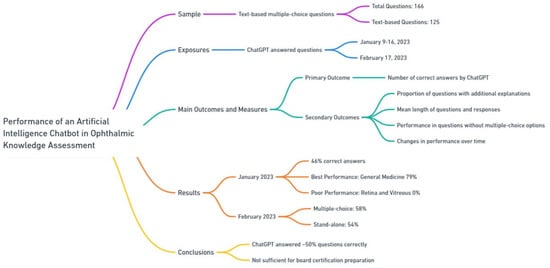

Figure 9. Performance of an artificial intelligence chatbot in ophthalmic knowledge assessment.
5. Challenges and Future Directions in Ophthalmology Chatbots
5.1. Ethical and Legal Considerations
5.1.1. Privacy and Data Security
Privacy and data security are critical concerns in the context of ophthalmology chatbots, particularly when considering the diverse legal frameworks across different nations. These chatbots gather and process sensitive patient information and personal identifiers, necessitating robust security measures to safeguard these data from unauthorized access, breaches, or misuse.
Ensuring adherence to industry standards and best practices for data encryption and storage is fundamental. Employing encryption techniques, such as secure socket layer (SSL) encryption, can protect the transmission of data. However, developers must also navigate the complexities of varying national laws, which often include additional rules in the field of transmissions, servers, administration, and telecommunication standards. This necessitates a flexible approach to compliance, ensuring that chatbots meet the specific legal requirements of each jurisdiction in which they operate.
Healthcare organizations and developers should establish explicit protocols for data access and sharing, considering different legal landscapes. Transparency in data handling practices is crucial to foster trust among patients, healthcare professionals, and chatbot providers.
5.1.2. Informed Consent and Confidentiality
Obtaining informed consent and ensuring confidentiality are pivotal ethical considerations when utilizing ophthalmology chatbots. Patients should be fully informed about the purpose, capabilities, and limitations of the chatbot, as well as the type of data it collects and how that data will be used. Informed consent should be sought before engaging patients in chatbot interactions and data collection.Confidentiality is equally crucial in maintaining patient trust and complying with ethical and legal standards. Ophthalmology chatbots must adhere to stringent confidentiality protocols to ensure that patient data are accessible only to authorized individuals involved in healthcare provision. Measures such as encryption, secure data transmission, and restricted data access help preserve the confidentiality of patient information.
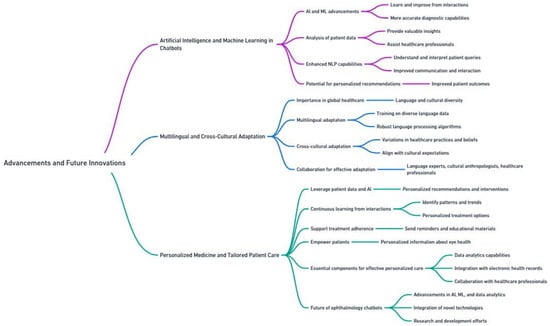
5.1.3. Compliance with Regulatory Standards
Compliance with regulatory standards is essential for ophthalmology chatbots, to ensure patient safety, quality of care, and legal compliance. These chatbots must adhere to relevant regulations and guidelines, such as the Health Insurance Portability and Accountability Act (HIPAA) in the United States and the General Data Protection Regulation (GDPR) in the European Union. Thorough assessments should be conducted by healthcare organizations and developers of ophthalmology chatbots to ensure compliance with these regulations. This involves reviewing and aligning data handling practices, security measures, and consent procedures with the requirements stipulated in the regulations. Regular audits and assessments can identify any gaps in compliance and facilitate necessary adjustments.5.2. Integration with Existing Healthcare Systems
5.2.1. Interoperability and Integration Challenges
Ophthalmology chatbots require seamless interoperability and integration with diverse healthcare systems, including electronic medical records, diagnostic devices, and telehealth systems, for efficient usage and effective usage. One of the primary challenges lies in the diversity of existing healthcare systems, each with its own compatibility level. In addition, diagnosis in the field of ophthalmology frequently requires the integration of multimodality instruments, such as tonometry, perimetry, fundus photography, and optical coherence tomography. Ophthalmology chatbots need to be designed in a way that enables communication and data exchange with various software applications and databases. This necessitates adherence to standardized data formats and protocols that facilitate smooth interoperability. Ophthalmology chatbots should also be compatible with a variety of devices and operating systems (e.g., desktops, mobile devices). Compatibility across a wide range of devices ensures accessibility and usability for healthcare professionals in clinics, hospitals, and remote sites.5.2.2. Collaboration with Electronic Health Records
Collaboration with electronic health records (EHR) that contain comprehensive patient information allows chatbots to access and update information in real time. This enhances their capacity to provide personalized and accurate care. However, challenges arise when it comes to EHR integration. Different healthcare organizations may utilize diverse EHR systems, each characterized by a unique data structure and interface. This variability poses a challenge in developing chatbots capable of seamlessly interacting with a wide range of EHR systems. One potential solution is the development of standardized data exchange formats such as fast healthcare interoperability resources (FHIR), which promote interoperability between EHRs and chatbots. FHIR facilitates the exchange of structured health data, enabling chatbots to retrieve and update patient information from EHR systems in a standardized and consistent manner.5.2.3. Seamless Communication with Healthcare Providers
Effective care requires seamless communication between ophthalmology chatbots and healthcare providers. Chatbots should facilitate easy and efficient information exchange, enabling healthcare professionals to review patient data, provide guidance, and make well-informed decisions. One challenge in achieving seamless communication lies in presenting information in a format that is easily comprehensible and actionable for healthcare providers. Chatbots should present patient data and clinical recommendations concisely and in an organized manner, allowing healthcare providers to quickly grasp the relevant information. The incorporation of NLP capabilities can assist in understanding and presenting complex medical information. Ensuring the security and privacy of communications is also of utmost importance. Chatbot systems should employ secure communication channels and encryption techniques to safeguard sensitive patient information during interactions with healthcare providers. Compliance with relevant privacy regulations, such as HIPAA, is essential in upholding patient confidentiality and meeting legal requirements.5.3. Advancements and Future Innovations
5.3.1. Artificial Intelligence and Machine Learning in Chatbots
AI and ML are driving advancements in ophthalmology chatbots, enabling them to learn and improve from interactions with patients and healthcare providers. This leads to more accurate and effective diagnostic capabilities (Figure 10).
Figure 10. Future studies in the utilization of ophthalmology chatbots.
5.3.2. Multilingual and Cross-Cultural Adaptation
Multilingual and cross-cultural adaptation is a significant advancement in ophthalmology chatbots, particularly in the context of global healthcare, where language and cultural diversity are prevalent. Chatbots that can effectively communicate and interact with patients from different linguistic and cultural backgrounds improve access to care and enhance patient satisfaction.
